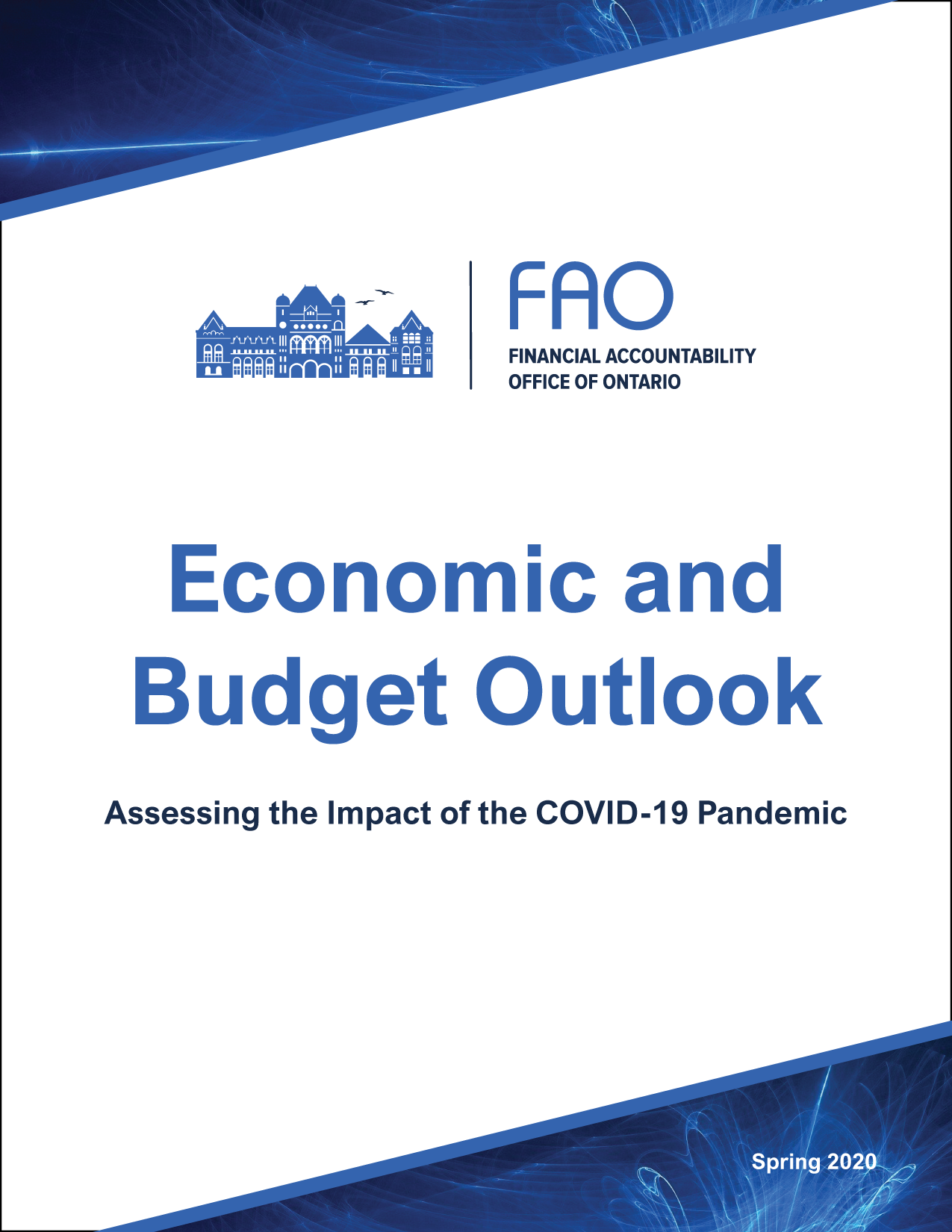Economic and Budget Outlook, Spring 2020

This report shows that the partial shutdown of the Ontario economy due to the COVID-19 pandemic will deliver a severe blow to the province’s revenues, increase spending, and result in substantially higher deficits and debt.
Economic and Budget Outlook, Spring 2020, Financial Accountability Office of Ontario, 2020.

